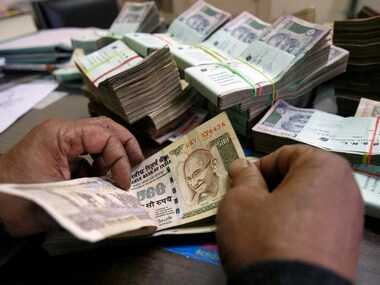There has not been a single case of stressed companies being referred to the corporate debt restructuring (CDR) cell in the April-June quarter. This is probably the first time in many years no fresh referrals are happening in the forum, which was set up in 2001 to assist troubled firms with relaxed repayment terms. The cumulative number of cases referred to the platform remained unchanged at 655 with a total size of Rs 4.74 lakh crore in the quarter compared with the preceding quarter. The number of live cases currently being restructured under the CDR too has come down in the April-June quarter to 269 amounting to at Rs 2.74 lakh crore compared with 285 cases to the tune of Rs 2.86 lakh crore in the March quarter. Does this mean that worst is past for the companies and corporations are able to stand on their own? Not really. There are two main reasons why no new cases have come to the CDR in the June quarter. [caption id=“attachment_2381422” align=“alignleft” width=“380”]  Reuters[/caption]One, the new provisioning norms from the Reserve Bank of India (RBI) on restructured loans, kicked in from April 1, are prompting banks to give a second thought before signing a loan recast deal. That’s because, under the new norms, banks need to make provisioning on par with the bad loans, even on loans they restructure. Effectively, this means when a loan is restructured, banks have to start with a 15 percent provisioning as against 5 percent they used to do earlier. This forces banks only to restructure those cases, where such assistance is genuinely necessary. Earlier, that was not the case. Banks often found it convenient to push many cases to CDR to prevent them turning non-performing assets (NPAs). This way, banks continued to show healthy asset quality position, different from the actual position. In many cases, banks were also compelled to recast loans for wily promoters due to their powerful connections, thereby misusing the whole concept. This practice came to an end after the Reserve Bank woke up to the problem. But for years, state-run banks have excelled in the art of hiding NPAs, compared with the private and foreign banks. One major reason for this is absence of accountability of bank chiefs. The tenure of bank chiefs in public banks is short. Every retiring chairman wants to postpone NPA recognition for his successor and show a healthy balance sheet at the time of his exit. The practice of covering up bad loans has come down after RBI governor Raghuram Rajan took away the leeway to push bad loans into restructured basket. Banks are now more cautious. As Firstpost , the credit goes to Rajan for ending the misuse of loan recasts. The second reason why there are no fresh CRD cases, according to a top CDR official, is that banks are now considering cases under the Joint Lenders’ Forum (JLF) mechanism. If they do restructuring JLF, they don’t need to come to the CDR platform. Under this channel, banks can conduct the financial restructuring of a troubled borrower between the group of banks and the borrower, on a bilateral basis. Failed cases still high The reason for reduction in live cases with the CDR (cases that are being restructured) is mainly because many companies exited the platform following failure to improve their business despite assistance. As many as 13 cases with total loan value of Rs 10,672 crore exited from the CDR cell on account of failure, while only 3 cases worth an aggregate Rs 1,700 crore exited successfully during the quarter. In comparison, failed cases in the previous quarter were about Rs 6,000 crore. So far this year, Rs 17,000 crore worth loans have been taken out of CDR on account of failure, while cases to the tune of just Rs 3,000 crore exited successfully. Companies, especially in the infrastructure sector, are still struggling with tight cash flows on account of delayed projects and the absence of fresh funding. The power sector is a major example, where banks have an exposure of Rs 5.7 lakh crore cumulative loan outstanding. Stressed asset scenario can ease only if economy recovers strongly in the next few quarters. The key lies with higher public spending and faster clearances of projects. The reduction in June CDR numbers no way indicates that the underlying stress in the books of banks have eased miraculously. There is, certainly, some improvement in the NPA situation in the June quarter compared with the last year, but if one looks at the aggregate stressed assets (bad loans and restructured loans), things haven’t improved much. The good part is that realism is setting in the banking sector and the era of free lunch to crony promoters is over.
The reduction in June CDR numbers no way indicates that the underlying stress in the books of banks have eased miraculously
Advertisement
End of Article


)

)
)
)
)
)
)
)
)



